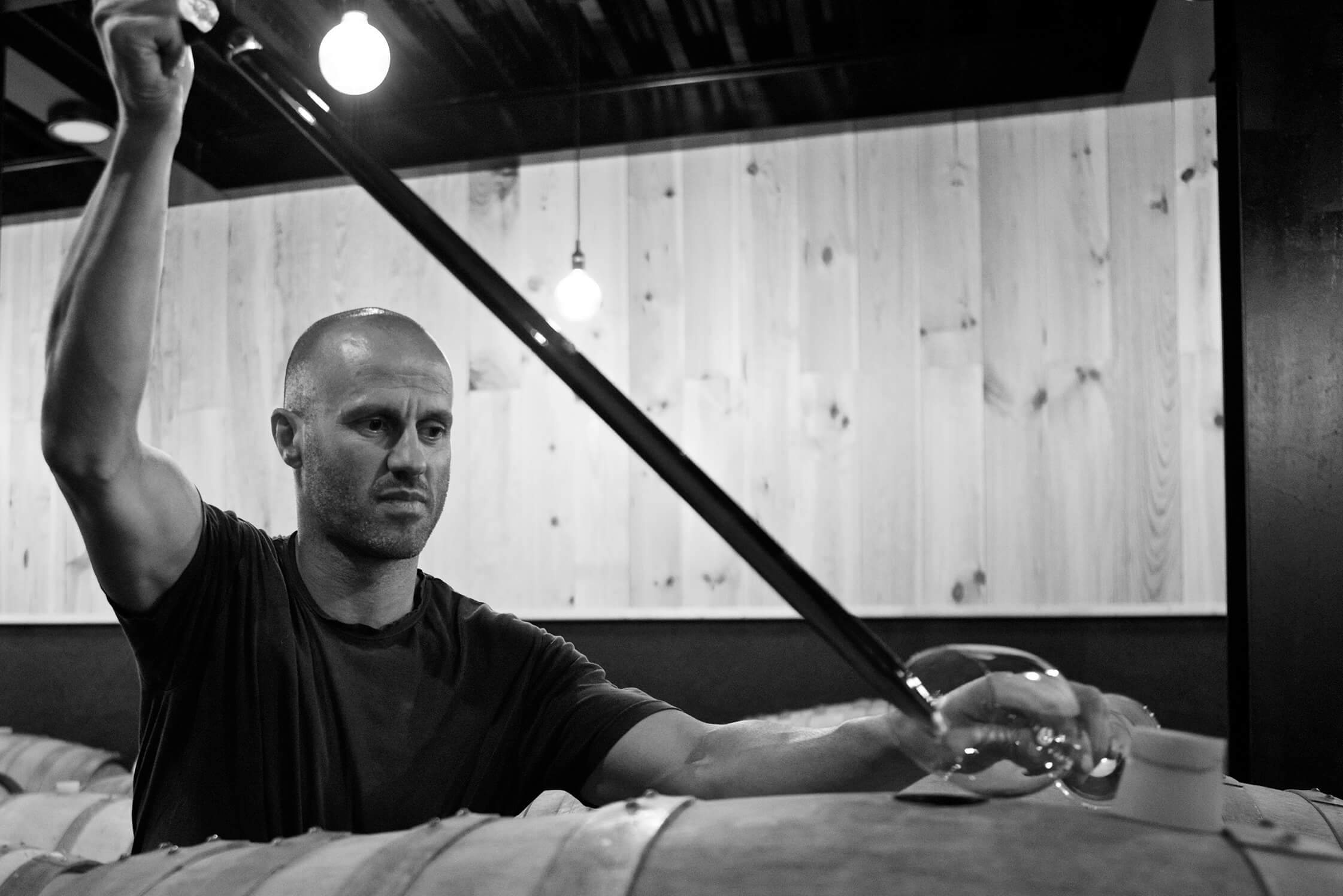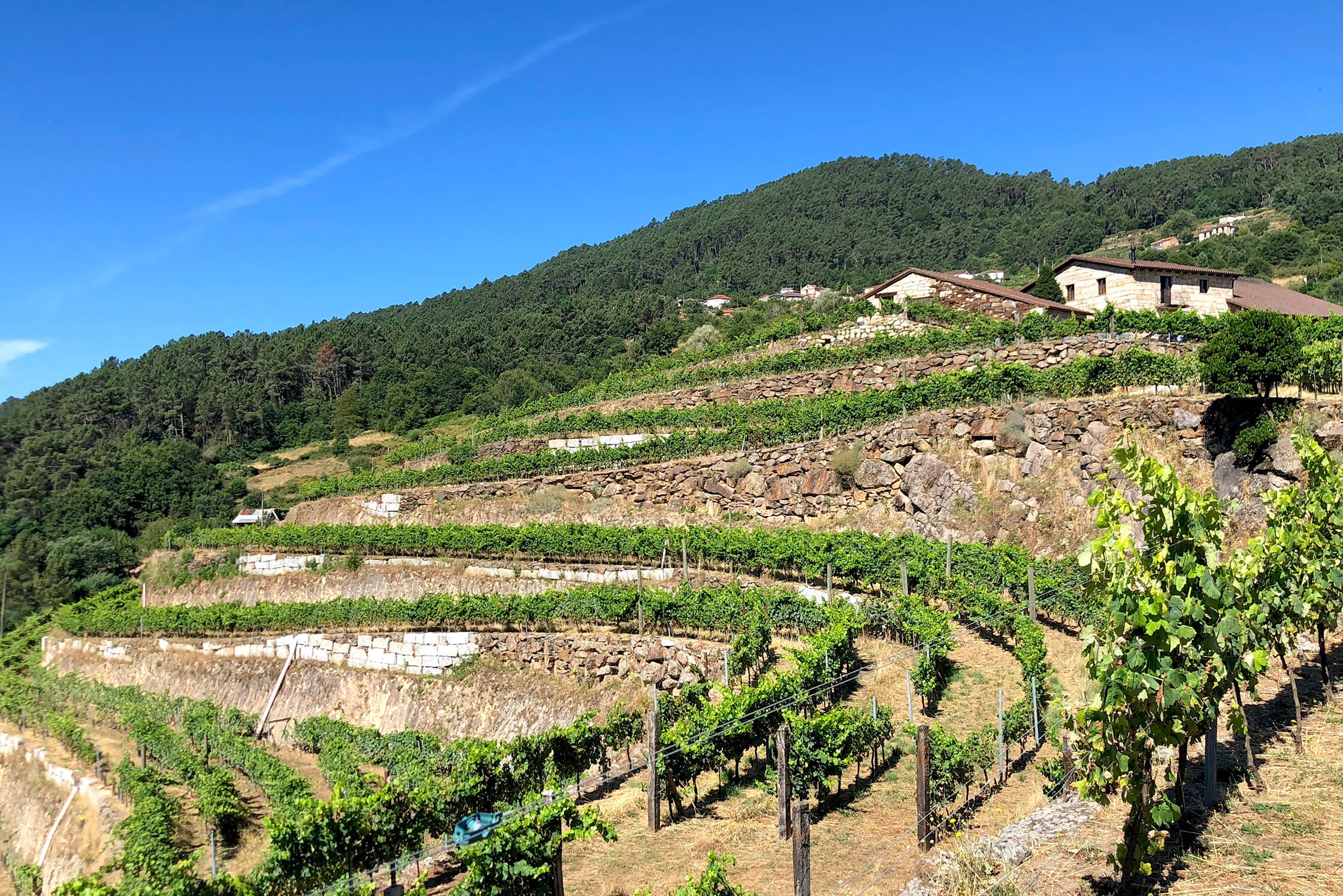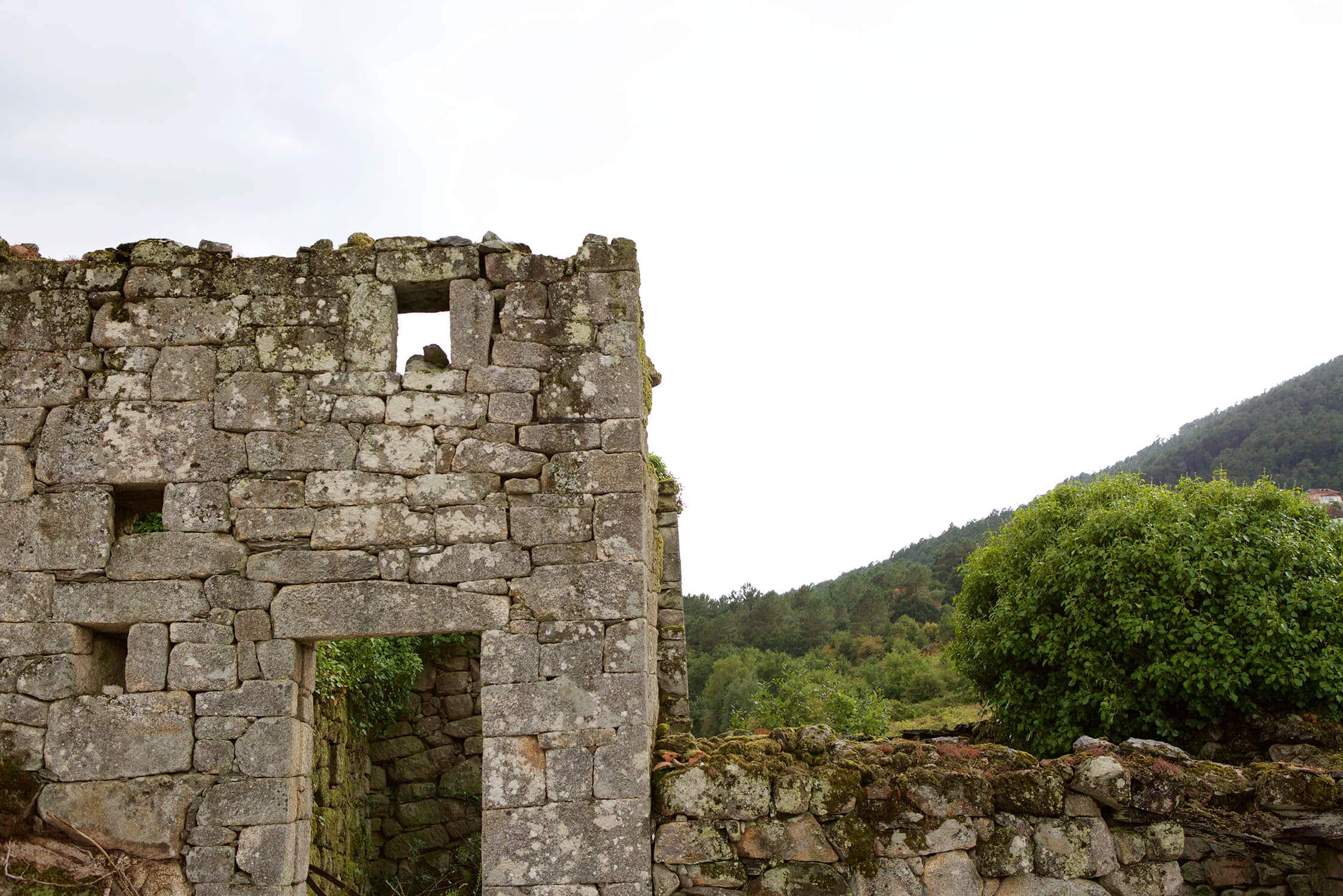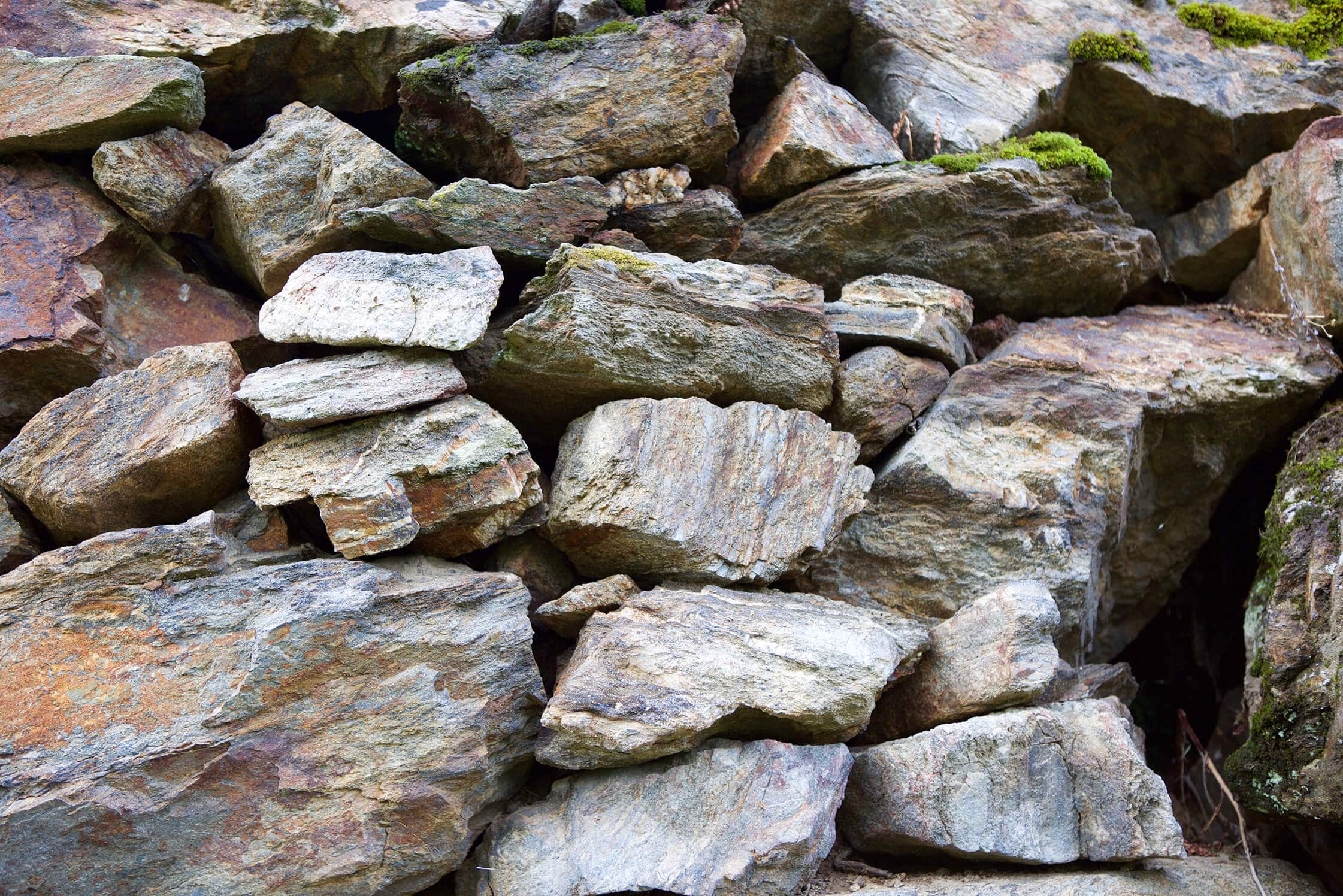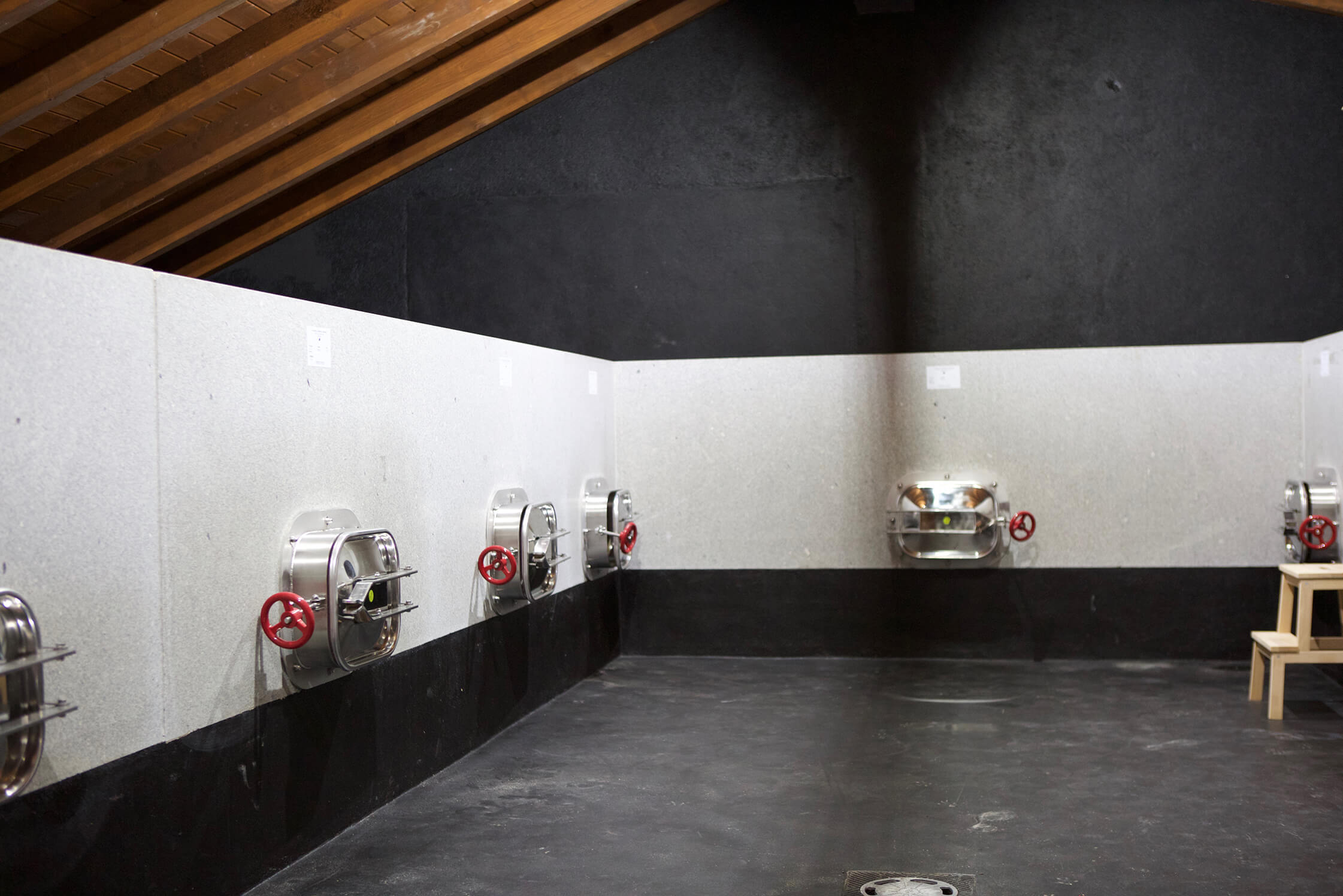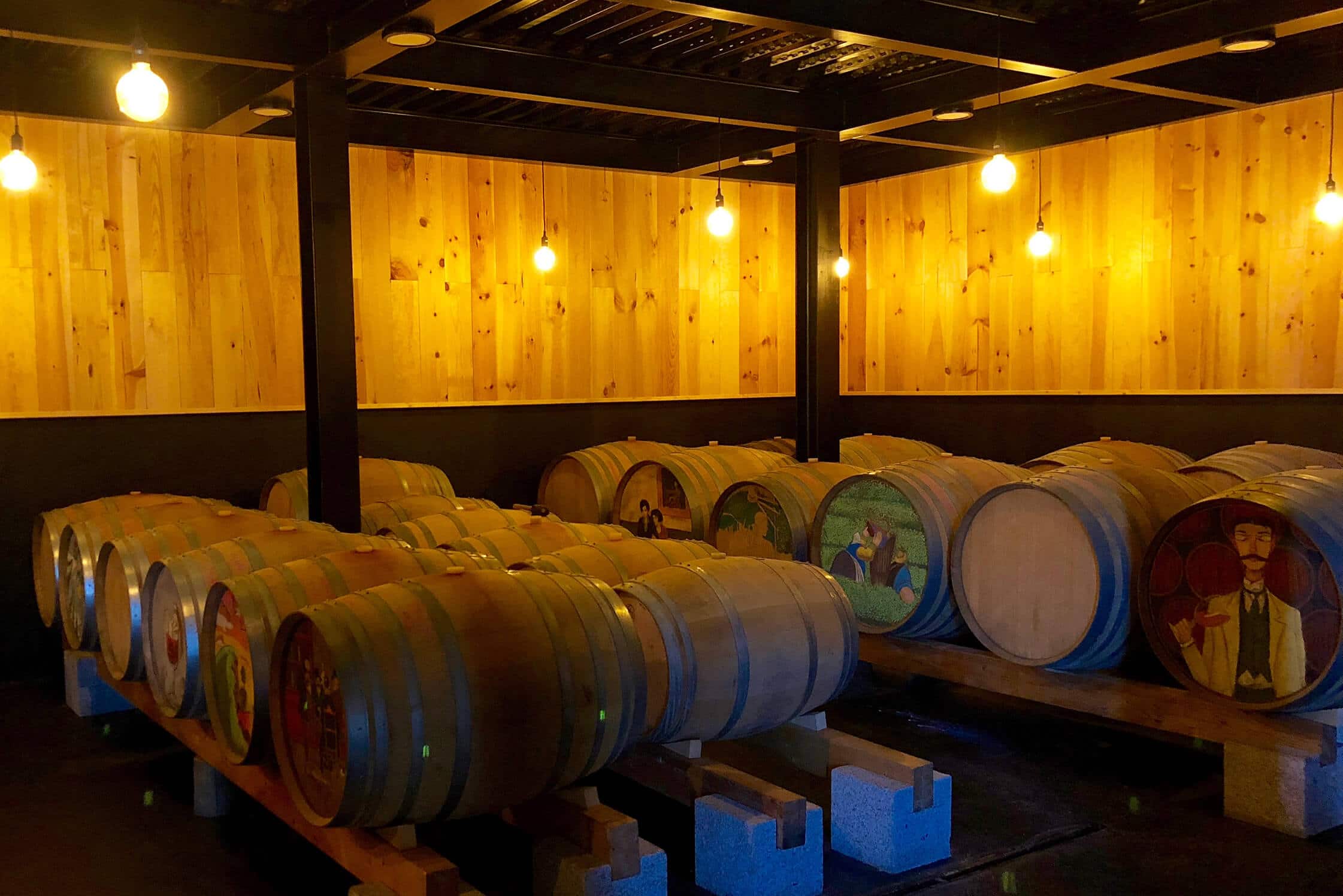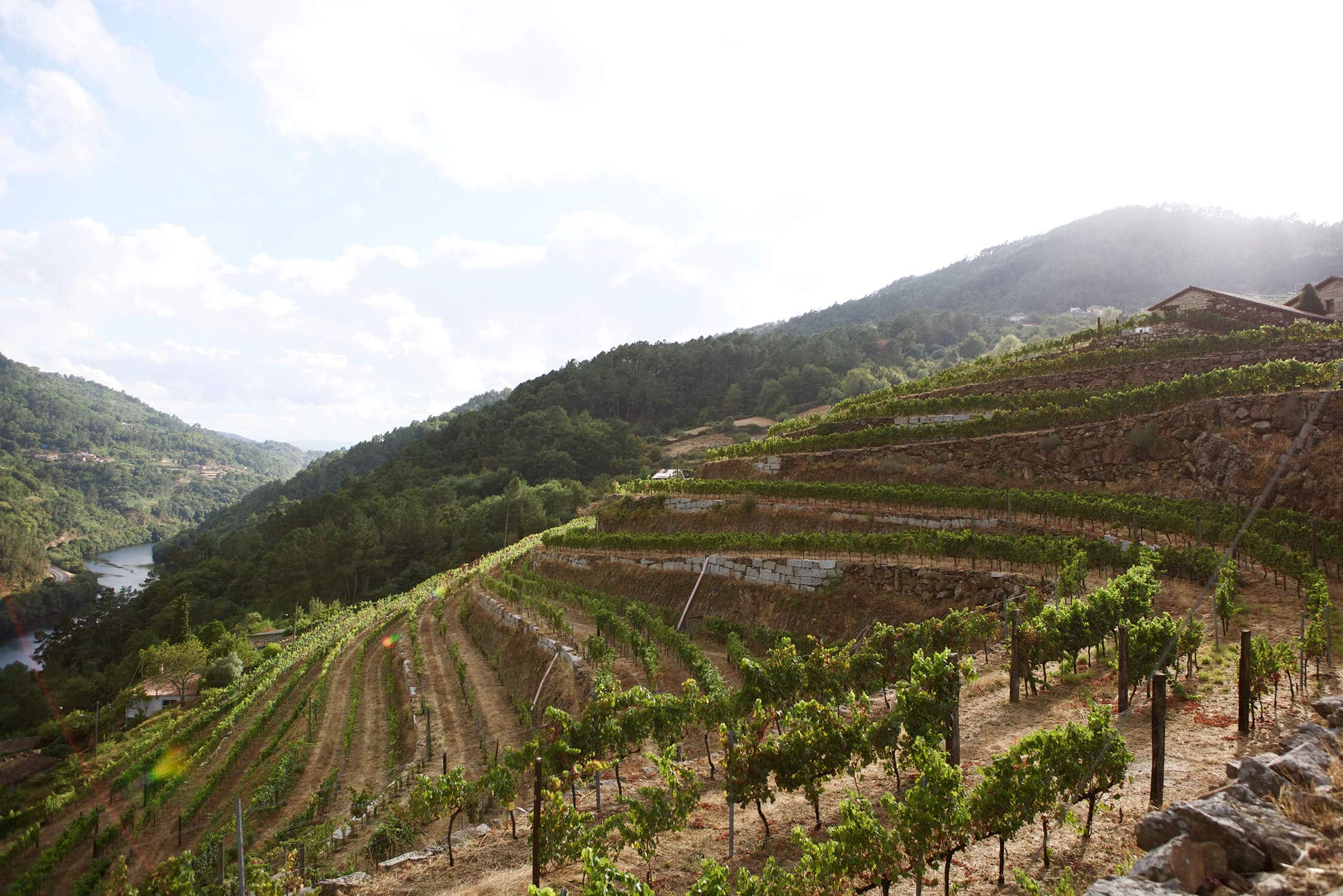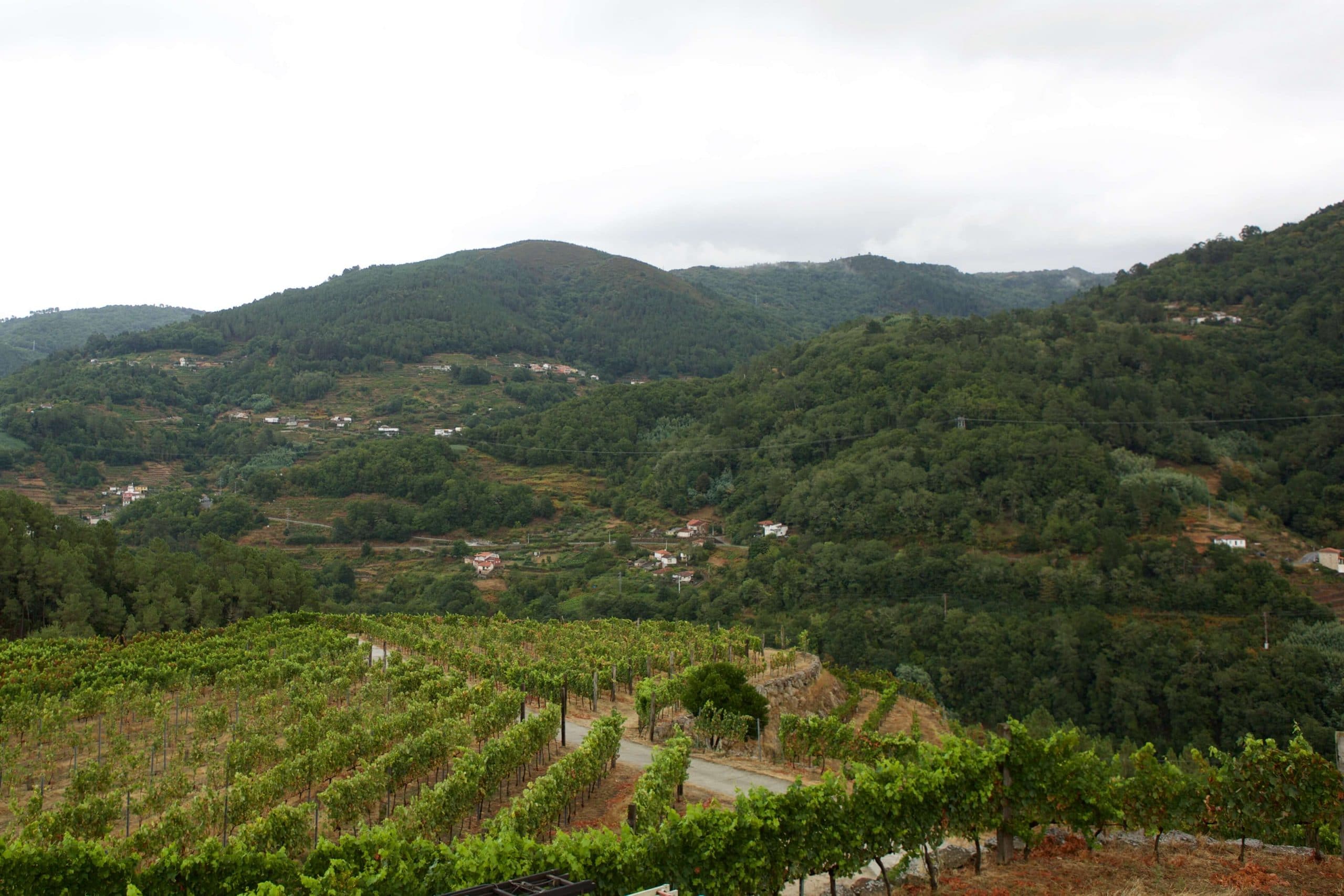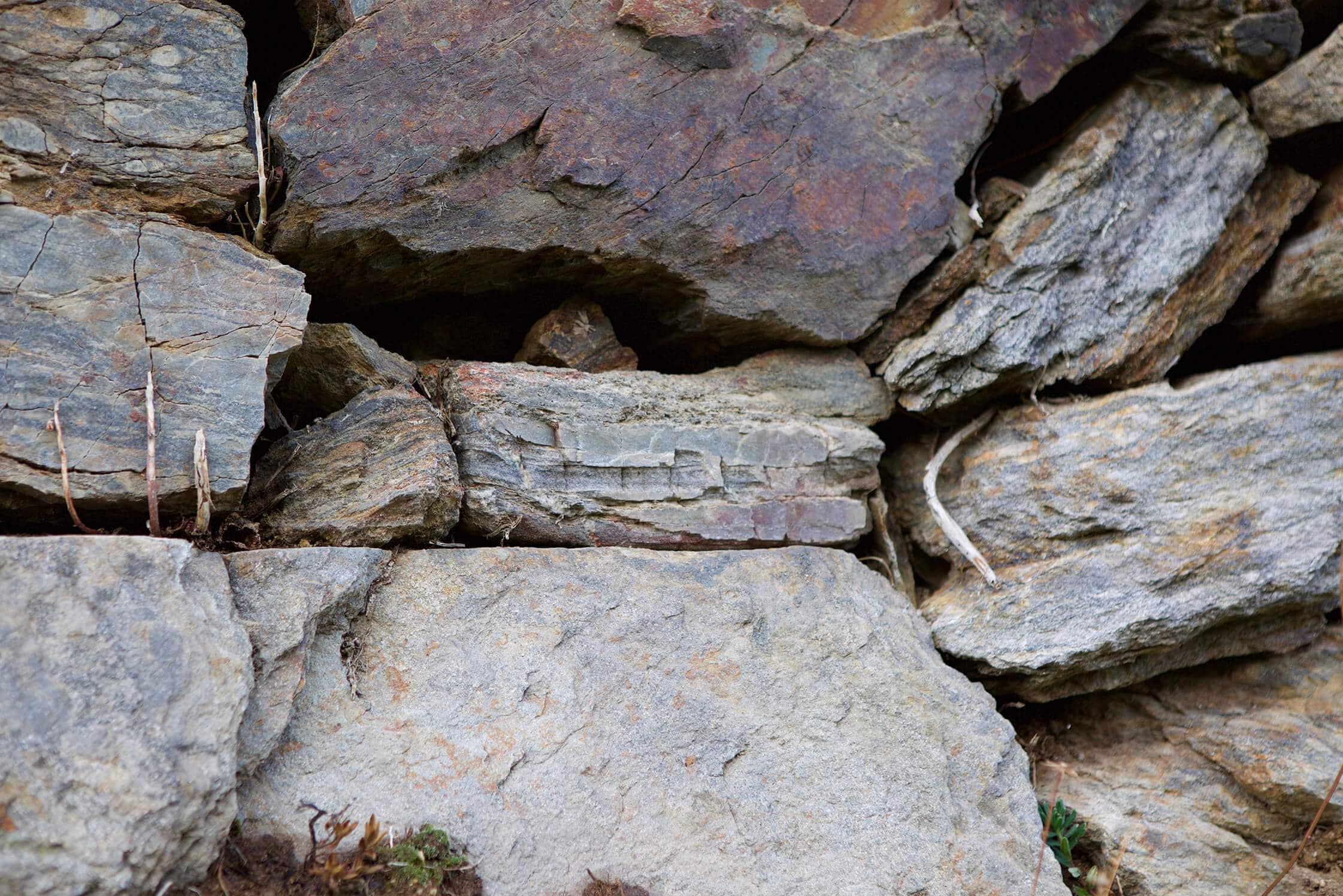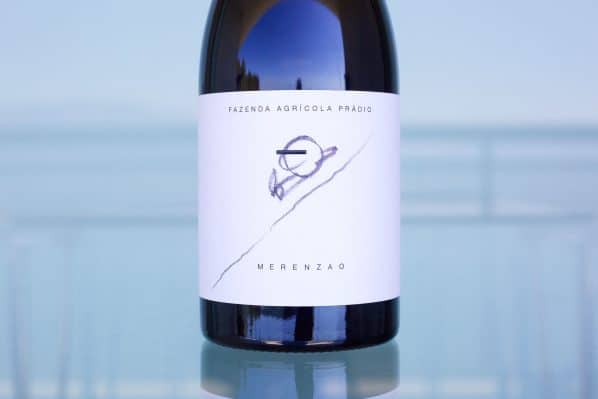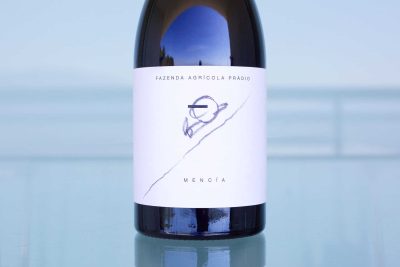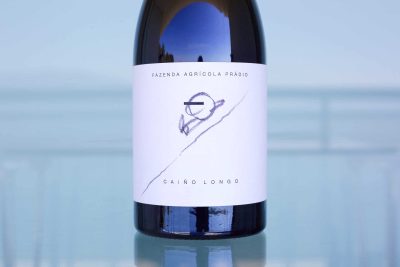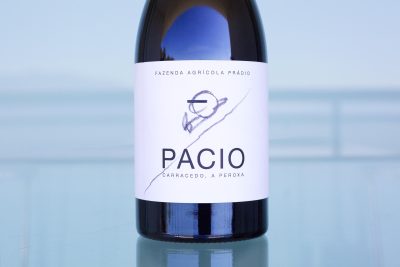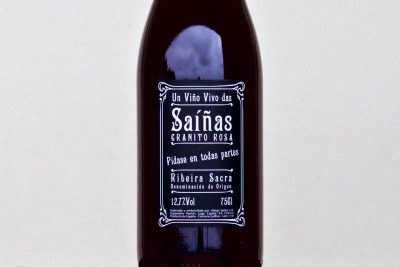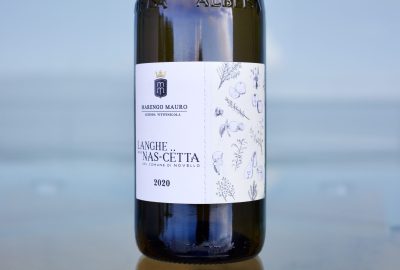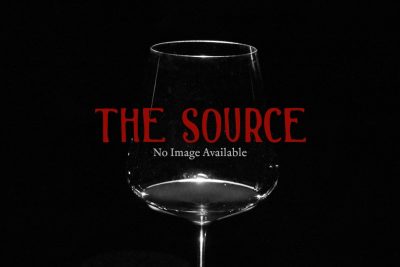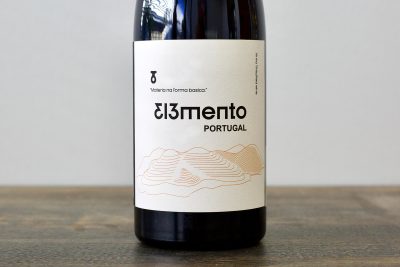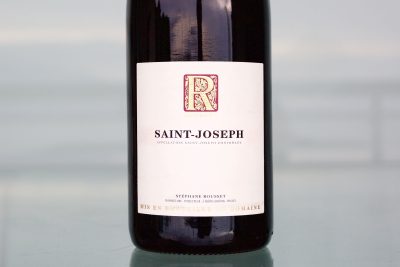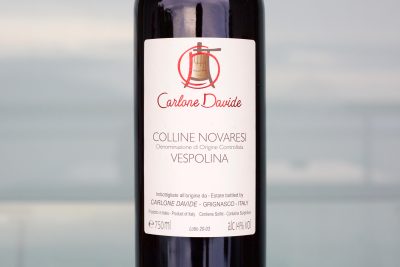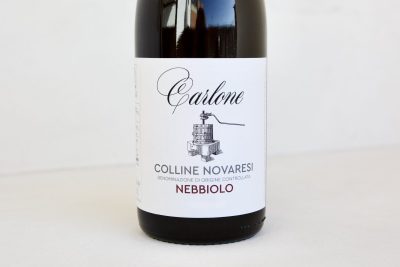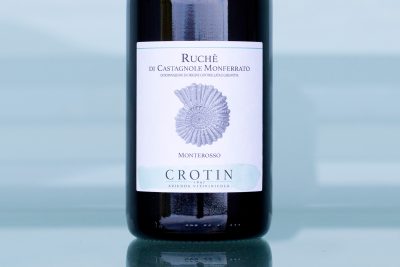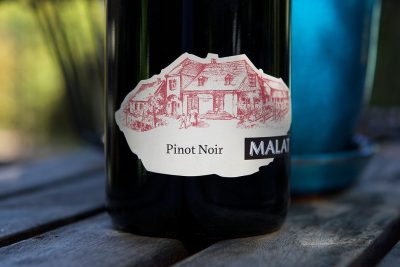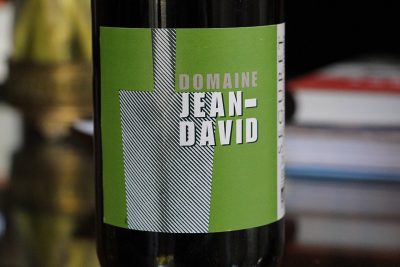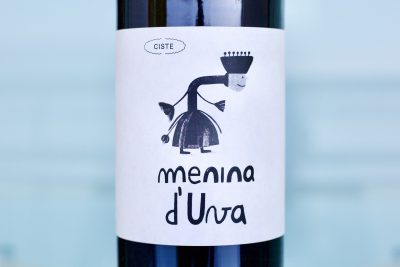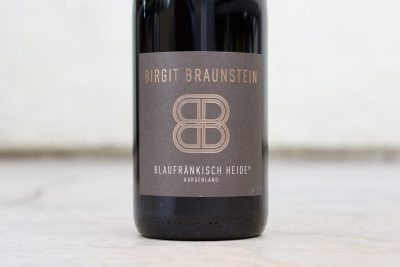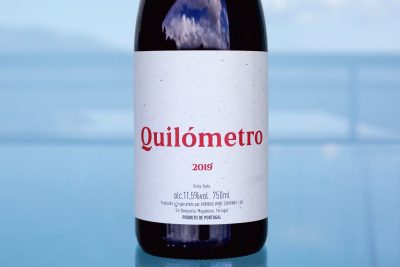Fazenda Prádio
Photography and writing by Ted Vance.
In the countryside of Galicia and across the border, in Northern Portugal, the most important thing is family. The second most important is the wine and food they produce; followed closely by friendships. But Xabi Soeanes, the founder of Fazenda Agrícola Prádio, wants to make his friends part of his family, and his visitors his friends. Xabi is in love with his Galician countryside and he’s even more taken by its nearly forgotten past. He wants to breathe new life into the place, but in an ancient way. His greatest desire, his dream, is to share his cultural treasure with the world, through the lens of his wines.
Fazenda: A Way of Life
Xabi (with the “x” pronounced “sh”, and the “b” like a “v”, and sometimes spelled Xavi) grew up in A Peroxa (another “sh”), a very small village about a half-hour drive from Ourense, which is itself a small city but with a big-city feel. Bridge after bridge, traversing the Miño River from one side of the city to the other, it connects the city’s ancient historic, granite buildings and the modern residential high rises on both sides. The city center is dense and squeezed by the steep surrounding hills inside the most expansive pocket along the Miño after passing through Lugo, eighty kilometers north, as the crow flies. The closest city to the Ribeiro and Ribeira Sacra, it acts as the commercial hub for these special Galician wine regions. A Peroxa sits only about twenty kilometers (twelve and half miles) from Ourense, but once out of the city it’s a mix of winding roads that cut around and up over the hills that rise above the river Miño gorge below.
The drive from A Peroxa down into O Pacio twists for another ten minutes as it cuts across the crest of the south-facing ridge above the Miño through thick, green forests, filled with shrubs, oaks, pines, and prádios—a common local tree also called Falso Plataneros (Acer Pseudoplatanus), or a False Maple; in the US, Sycamore Maple, and in the UK, simply a Sycamore. After a hard (often two-point) right turn, it’s straight down a meandering slope into the open air of the expansive gorge, losing hundreds of meters of altitude in a short distance that abruptly levels off like a landing plane straight into the gates of what, as of 2021, are old, rounded slab, granite-block ruins in process of full restoration by Xabi and his father, Manuel, all perched on a small plateau overlooking the river with a panorama of the south side of the gorge.
Like many generations of families from Northwest Iberia, Xabi’s lived under the fazenda, a sort of subsistence farm, or small farm, with a commercial agricultural output of hand-made and hand-grown products, like wine, vinegar, bread, vegetables, animals (rabbits, pigs, chickens, cattle), and craftworks, all sold at local ferias—or side street markets; interestingly, it was Xabi’s grandparents who started the first feria in A Peroxa. This lifestyle carries into their daily activities with their bed and breakfast in A Peroxa. I don’t usually eat breakfast but the sweet breakfast breads are fabulous and it’s hard to pick a favorite between the chestnut, apple and lemon, though the latter took the cake for me on my first visit. Food in this family is important and a passion of Xabi’s. Despite eating only one meal a day at dinnertime (this is what keeps him looking young and fit), he loves to cook and at the fazenda and winery, there is a big kitchen and granite enclosed mess hall that could feed a full platoon. Xabi and I share the opinion that winegrowers who love to cook often make different wines from those who don’t: perhaps upfront quaffability takes a backseat to how the wine fits in with food—a fading idea in today’s wine culture.
In Spanish, fazendas are more often called haciendas, a reference to the same thing; in Portuguese (and Brazil) they may also be called fazendas, among other names depending on where in Portugal. Fazenda comes from the Portuguese verb fazer (or facer, in Galician), which means “to do or make;” hacienda comes from the Spanish verb hacer, which means the same. Almost every family in the countryside in the not-so-distant past made their living making things with their hands. And while it’s hard work, for some it’s a perfect life: simple, but with meaningful, daily communion between human and nature.
After some years living in Zurich, Switzerland, where he immigrated to post-Spanish Civil War, Segundo, Xabi’s grandfather from the side of his mother, Carmen, returned to A Peroxa. Just as many previous Spanish generations from the fallout of World Wars and dictatorship eras, Segundo left in search of a better fortune than what Galicia could offer him in his youth. There, he worked as a cook and sent money back home to the family. With his eventual return home, he brought new ideas and a strong inclination to build on the connection of his family and friends to their land. Xabi explained, “Segundo is a quiet man. But, he is greatly respected by his family and the community. He is an elder who is considered to be a local wise one, because of the knowledge he’s shared over the years about the rhythm of nature and the cycle of life between human, animal, plant, and earth; things that seemed to have been born into him.” In A Peroxa, Xabi is a legend in his own right.
Country Boy, Big Dreams
When Xabi was eight years old, he began to play fútbol (soccer) at Pubellon, a sports school in Ourense. There he met Iago Garrido, from Augalevada, another futboller whose second life was to be that of a winegrower, too. Iago is in the Ribeiro and wine superstar in a league of his own, in a unique way. At eighteen, Xabi signed with Ourense’s city team, a second division squad within Spain’s professional fútbol league, La Liga. Those who know European fútbol know that Spain’s La Liga is often considered the top domestic league in the world, though of course there is a major debate on this—and likely fighting words outside of Spain—but no one denies the amount of talent produced in this country.
While he enjoyed his life as a professional boller, playing twelve years between FC Ourense and Lugo, and a time at the university in Lugo, Xabi’s love for rural life would eventually lead him to his family’s corner of Ribeira Sacra. His last year in the league was 2011, but the wheels for his future family project, Fazenda Agrícola Prádio, were already in motion. His father began planting Mencía vines on the steep hillside adjacent and below the ruins in O Pacio. Xabi’s first year involved in the project was 2002, and 2003 was the first harvest, which yielded only a couple thousand bottles.
Xabi’s Galicia
Xabi’s entire family gives him inspiration for his project, and they are all involved. The main driver for his ideas surrounding wine and the family fazenda is to understand and incorporate the way wine was made centuries ago in his area. He expresses envy for other regions that maintained their history; even in the hardest of times many kept their ancestral viticultural knowledge passing on down the line to today. “Here, in Galicia,” he said, “They broke the line. And the difference between here and other places is that the Galicians don’t bet on their history.” Xabi’s life’s work is to be a part of the reconstruction of that broken vinous line for each small hamlet nearby, not only with his family’s in O Pacio.
The line of viticultural knowhow was slowly lost in Galicia with a series of unfortunate events that started in the 1800s with the arrival of the mildews (Powdery and Downy) and phylloxera, all from the New World. After nature had its way, mankind nearly finished the job with a couple of World Wars (where Spain remained neutral in the first and partially neutral in the second, but economically crippled by the ripple of war), a Spanish Civil War, Dictatorship, and the post-World War II industrialization, all of which, in addition to the natural plagues, occurred in less than a century. The industrialization of Galicia was an economic saving grace for many who couldn’t make ends meet after generations of struggle. This led to the mass abandonment of agricultural areas over decades that brought the farmers into the biggest industrial cities of Galicia: primarily Vigo, A Coruña and Ferrol. Others immigrated to other countries, mostly the Americas and throughout Europe. More often than not, no one came back. I’ve been told that once a galego gets out of Galicia, they’ll never return. Xabi’s grandfather, Segundo, stands as a rare exception.
Despite the losses through Galicia in general, Ribeiro, located just to the west of Ribeira Sacra, on the other side of Ourense, was the Galician wine region that best maintained its history throughout these troubled times. Xabi describes Ribeiro as “the cradle of the history of Galician wine.” Ribeiro was indeed the cornerstone of the region and likely the breakout center for the Benedictine and Cistercian monks nearly a thousand years ago. And according an unofficial website of the Ribeiro’s Denominación de Origin (D.O.), www.ribeiro.wine, “the OMPI (World Organization of Intellectual Property) acknowledges them [Ribeiro] as the first evidence of a protection of a geographical indication in Spanish laws.”
A Galician Standoff
In 2012, Xabi chose to omit the Ribeira Sacra D.O. certification from his labels. One of the D.O. commission’s tasks is to market their region with clarity to help winegrowers to optimize understanding of their regions on domestic and international levels, but the overarching complaint is that they’ve been too restrictive. One of the main challenges for Xabi—and many others who work inside the boundaries of the D.O., but don’t certify or conform—is that the commission was (and perhaps still is) too focused on Mencía, a believed outsider brought from further east of Ribeira Sacra by a couple of hours by car. They also don’t concentrate much on pushing for the recovery and propagation of the region’s ancestral grape varieties. Indeed, Mencía is now a permanent fixture in the region and its history, but it has not been there for thousands of years; it’s only mostly developed over the last century. There are many superb, in fact world-class, wines produced from Mencía, especially the old-vine wines, but a lot of people don’t believe it should be the grape that defines the region. However, it’s true that for outsiders to better understand wine regions it is a good idea to keep things simple and accessible.
Another clash with the D.O. is the production style of the wines. The commission panel appears to be too rigid and fixated on its recent successes—as in those of the last few decades. These lingering antiquated laws and perceptions will continue to stifle creativity and discovery in the vineyard and cellar because of the perceived value for the producers to have Ribeira Sacra printed on their bottles. It’s a pity for the D.O. that some extraordinary wines may be excluded simply because they are “not what is expected” for the commission’s recognized wine style. Things like turbidity, low alcohol content, or specific grapes can toss a perfectly crafted wine, highly expressive of its terroir, out of D.O. certification. But to allow some outside grapes, like Tempranillo, to be permitted and not other indigenous varieties seems to be an obvious oversight, or perhaps a political decision. While some things are indeed good to monitor, it appears that they need to be more relaxed to let the growers breathe, to let them create, and to support the preservation of what shreds are left of the vinous history of generations past. Many winegrower’s grandparents are still alive and hold irreplaceable information. They need to be part of the conversation, especially the quiet ones.
The last and what appears to be the most complex challenge: the subzones and their usefulness. Not only Xabi, but many other growers, explain that the physical landscape changes too quickly to conform to D.O. rules and expectations. The Ribeira Sacra subzones were largely based on geographical and political boundaries, like river valleys and historical monastic orders—not specifically on terroir differences.
Xabi proposes that they define the regions by the twenty-two municipalities within, and further define their parishes in more detail. Aside from adding more indigenous grapes to the permitted list, he believes that they should work to define areas by not only specific terroirs (bedrock, altitude, climate, etc.) but also each local history, the latter of which will be a polarizing consideration… Five subzones that cover lands that don’t relate to one another’s terroirs even within each subzone is far too vague. From the outside looking in, the most glaring deterrent seems to be that the region needs a much greater group of quality-minded and open growers to flourish first to justify this kind of definition for this extremely expansive and complex region. And, is it too early to make new rules? Or is it time to just relax them and open up the floodgates of D.O. certification and see what happens? As Xabi says, the line is broken, but it can be fixed. A region’s history and tradition is what makes it special, not its conformity to a global market.
In 2019, Xabi finally rejoined the list and is hopeful for the D.O. commission. However, he remains skeptical about many things. I believe he’s right to have a balance of hope and skepticism, especially about the helpfulness of the Ribeira Sacra subzones as they are today. After a good amount of research on the region’s terroirs from a global perspective, along with its subzones (compiled and explained here—available to view May 2021), it seems that the differences are indeed too great from one location to the other to make too many generalizations based on the subzones themselves. All one has to do is ask a Galician wine professional (whether in winegrowing or the restaurant side of the business) for generalizations and wait for the deep sigh, followed by a look of anxiety about where to begin the explanation. Within Ribeira Sacra each individual location has its own story to tell. This place isn’t like Burgundy’s Côte d’Or, where the main slope generally faces east to south and follows a few easy to understand and consistent terroir concepts through the côte: same basic bedrock (limestone) and topsoil (clay dominant with limestone rock fragments of varying grain size), and one dominant red and white grape; it’s not so hard to get your head wrapped around the basics. However, no matter how simple the summary may be presented, the Côte d’Or’s terroir quantum mechanics are extremely complex.
In Ribeira Sacra, by contrast, there is often very different bedrock types in the same vineyard with multiple expositions on the same hill (perhaps hillsides without vines in most places are those that face due north), flattish to some of the steepest vineyard slopes in the world, and a lot of grape types with immense differences in their composition of acidity, tannin, pigmentation, phenolic ripeness levels at differing alcohol levels, etc. Perhaps what the D.O. did kept it somewhat understandable, but each subzone has so much variability that it almost serves as nothing more than a geographical guide. In the end, just like everywhere in the world, it comes down to the specific plot, what vine material is planted, and the philosophy, decision-making and skill of the winegrower.
Pradío Vineyard Practice: How Dogma Can Kill The Crop (A Rant)
Xabi has tried it all. In Galicia, figuring out the right method to employ organic or biodynamic farming that still yields a reasonable volume of grapes in relation to how much work is done often remains a mystery. Many participate in these practices, even in the Ribeiro, and a few more in Rías Baixas, but the losses can be economically untenable due to the region’s sometimes uncontrollable mildew pressure. It seems to be a mistake to think (and even believe) that organic or biodynamic vineyard cultures are a reasonable and practical solution for grapes grown in every viticultural area. The truth is that to ever have true “natural” wine made in the world—no additives or amendments at all outside of work done by hand—one must consider the vineyard treatments: the additives. Until both mildews and other vineyard diseases are obliterated from the face of the earth, along with phylloxera, “natural wine,” or wines made like they were hundreds of years ago, are an impossibility; things have irreversibly changed, thanks to mankind. Sulfur and/or copper sprays will always be needed (at least in the foreseeable future), as will soil amendments for certain extreme soil pH levels (like the acidic soils of much of Ribeira Sacra), American rootstocks, etc, and these clearly aren’t naturally occurring, since they don’t come from the vineyards themselves. The obstacle is that the more natural practices employed in many extremely difficult areas, such as in most of Galicia, require much more manpower and machine power. Along with the production and delivery of the materials, the ecological deficit created cannot be repaid by a more natural vineyard setting alone. Many winegrowers—not only some I work with—have told me these things over the years, but they’ve made it clear that they can’t say it in public for fear of controversy.
Xabi does his best with the conditions of his particular vineyard site and the massive climatic fluctuations that have increased dramatically over the last decade. And with Xabi comes one of the most rewarding personality traits of any human being: honesty. While others in the wine business skirt around direct questions about their practices for fear of market loss to the idealogues, he’ll tell you the way it really is. Unfortunately, many idealistic buyers in today’s market want—no, need—to hear certain things in order to feel comfortable enough to buy a wine: words like organic, biodynamic, natural, no SO2, no filtration, no additives, no vineyard treatments, and on and on. So, growers tell the world what it wants to hear, and importers and salespeople tell the stories told to them and often sweeten them up even more, and the buyers feel good about it and put their money down. Farming certifications have become a scandal and for the most part, it’s a pay-to-play game where governing bodies mostly rifle through purchasing documents to verify that no unauthorized products were purchased and while rarely setting foot in a vineyard, let alone making physical and chemical examinations. Many growers have forsaken certification because of this lack of accountability for things like vineyard testing for substances prohibited in organic or biodymanic farming. Xabi does not fit into this tell-you-what-you-want-to-hear camp, he will tell you the truth.
Xabi’s Truth
For many years Xabi employed organic and biodynamic principles all the way to near financial ruin. In the very beginning, they were practicing more conventional farming, but around 2011, when he came back home, he went for the gold medal, because what else would a very competitive former professional athlete do? He made the switch and while it made him feel he was doing the right thing for nature and his wines, he wasn’t doing the right thing to ensure that his business could survive. He had a promising start, but only a few years later, in 2016, he lost almost the entire crop. Once in a while this happens. Yet in 2020 it happened again; he lost all but about 5-10% of his crop. What’s more, they suffered great losses in the intervening years as well. It’s been a tough road and the best growers in Galicia are in constant search for the most natural solutions possible, but a consistent silver bullet has yet to be found.
Today, everything starts with organic methods, but Xabi opened a door he closed some years ago to avoid what happened in 2016 and 2020. And who can blame him? We cannot forget that Galicia is a “paradise for fungus,” as Diego Collarte said to me on my first visit to his organically certified Ribeiro estate, Cume do Avia, where he has regularly lost 40-70% of his crop to fungus every year we’ve worked with them because of their stern commitment to organic farming. Those foreign mildews that arrived from America in the 1800s simply changed everything, forever. Nowadays it is impossible to manage one or the other without the intervention of topical sulfur and/or copper treatments. These are used in 99.999…% of all EU vineyards, even organic, biodynamic and “natural” vineyard cultures, and in these parts it rains a lot and the humidity is probably higher than any other significant wine region in western Europe, so they’re that much more necessary.
Within Galicia’s climate woes (rarely comparable in humidity and precipitation to any other Western European wine region), one has to ask if doing up to a dozen organic and biodynamic certified sulfur and/or copper treatments in most years—while keeping up with their organic certification standards—is even a sustainable practice from an ecological perspective. This isn’t a drier continental climate zone where mechanized farming and fewer treatments is often the norm, like many famous wine regions from mainland Spain, France, Austria, Germany, and to a lesser degree, Italy. This is Xabi’s dilemma, shared by many winegrowers in the EU who work in regions with such high mildew pressure due to the climate: an organic label certification at the cost of big picture environmental causes due to the amount of ecological damage it creates to manufacture, attain and administer the treatments. When faced with each unique circumstance that arrives in different years, Xabi has begun to weigh the options and do what he feels is right with a special regard for more global ecological concerns, not only those of his vineyards. That said, once in his vineyards, it is easy to see that accordance with nature is his priority. And the added benefit of the biodiversity created by being surrounded by forest on all sides instead of other people’s vineyards is not lost on him.
The Vineyard
Fazenda Prádio is located within the Chantada subzone of Ribeira Sacra. Located in its southernmost and westernmost end, it’s a unique place unto itself. The vines are perched on wide terraces that overlook the Miño River gorge, where the Sil River meets the Miño. The vines sit between 180-300 meters (590-980 feet), whereas further upstream, past the dam, Central Hidroeléctrica dos Peares, and into the Peares reservoir, the vineyards are generally above 200 meters (just over 650 feet) and cap out around 450 meters (near 1500 feet); that alone makes it quite different.
The climate in this area, and most of the central and western ends of Ribeira Sacra, is a tug-of-war between oceanic and continental. Fazenda Prádio is located—as the crow flies—about twenty kilometers away (a little over twelve miles) from the heart of the Amandi subzone to the east, the town of Chantada to the north, and the eastern border of the Ribeiro. He’s quite secluded from other viticultural centers that have vines blanketing a large swath of hillsides.
The forests surrounding his 3.5-hectare vineyard offer a greater degree of biodiversity, and thankfully there is not a single eucalyptus tree in sight. Most of the forest is indigenous—sadly a bit of a rarity in some parts of Northwestern Iberia where a lot of open land was planted to pine and eucalyptus for pulp factories that could take advantage of the many rivers needed for processing. Nearby pines and eucalyptus often seem to mark wines with their fragrances, perhaps from their resins. Pines tend to be moderately allelopathic (a biological phenomenon where plants release biochemical growth inhibitors to suppress or kill other competing plants or organisms) depending on the type of pine, but eucalyptus trees are extremely allelopathic, which, in addition to being guzzlers of water, makes for very stiff competition for other species of trees and plants once they’ve found their way in. This is why forests filled with this Australian native are almost devoid of anything else.
The bedrock on the farm is primarily composed of granite, and to a lesser degree, schist. The terraces are steep, but not so steep that they can only have one vine row on each; most have two or more, and on the top near the winery, there are some pretty good flatter areas. In general the topsoil is very shallow and low in fertility—perfect for vines. Despite the relatively recent manipulation of the hillside to get it back into proper vineyard form, the topsoil is derived from the granite and schist bedrock, and it is not tilled.
Grape Blending: A Regional Tradition
While Xabi has some single-varietal wines, his strong belief is that the sum of multiple parts will make the best wine. This is a regional historical perspective, and it is due to the variability of the indigenous grapes in Galicia that seem to be greatly influenced by each season and exacerbated by great diversity of bedrock and soil types, aspects, altitudes, etc, of each individual vineyard. When one grape on the farm struggles, there are others that thrive. This is surely part of the reason the range of indigenous grapes in Galicia (and in much of Portugal) are so commonly blended. Indeed, they are fascinating grapes on their own, but it is true that when blended together the dimensions are perhaps more subtle while the entire breadth of the wine is magnified. Xabi believes that his Pacio Tinto, a blend of all the red grapes, is the most complete wine in the range and is priced as such.
Red Grapes
In the beginning, everything was planted with Mencía. His father, Manuel, began planting in 2000 but the land was a mixed crop, not only vines. Slowly vines began to take over the ideal positions for ripening, and in 2011 when Xabi came home to stay, he and Manuel began to graft some vines over to other grape varieties. His desire, like many of the progressive growers, is to try to find balance in the vineyards by bringing in more indigenous varieties rather than a vineyard full of Mencía, a grape that is said to be foreign (originating further toward the east around Bierzo, or Jamuz) and was introduced and mass propagated because of its reliable yield and consensual nature as a finished wine.
Grafting, instead of replanting, was preferable to conserve the well-developed root systems of many of the Mencía vines planted by Manuel. This helps to retain the beneficial age of the plant roots already there. He began with Merenzao and Brancellao in 2011, and finished the grafting by 2013. Today, there are nine hundred vines of Merenzao, which in a normal year will produce between fifteen hundred and eighteen hundred kilos of grapes. It’s a medium vigor and yield variety with a tight cluster and is more sensitive to botrytis because of its thin skin. When done well, it can produce very sensual and aromatic wines with a fine mouthfeel of good natural acidity and very little tannins. In France’s Jura, Merenzao is known as Trousseau. Elsewhere in Northwest Iberia it seems to have a hundred synonyms and turns up in many unexpected places. The world would be a better and kinder place if everyone drank more Merenzao.
Brancellao is another fabulous grape, but is seemingly only found in Northwest Iberia. Xabi has three thousand vines and it produces a much smaller yield than most varieties, perhaps because its cluster shape is quite open and node spacing on the shoots is wider. Oidium is more of a problem than botrytis. (Oidium’s kryptonite is sulfur spray.) Its skin color is very pale and the wines take on very little color and tannin. Its winning attributes are its fresh acidity and beguiling but delicate aromas of fresh red fruits and soft spice notes. Xabi believes that this is one of the most important grapes for the area. I agree. I adore this grape.
In 2014, one of Galicia’s most untamed but perhaps most promising red varieties (in my opinion), Caíño Longo, was grafted to the older Mencía vines. Caíño Longo combines all the elements of a truly great grape: good structure with its exuberant acidity and medium tannins, a wide range of aromatic and palate complexities, and that sort of inexplicable nobility and extra aromatic and palate dimensions shared by the greatest wine grapes of the world. The challenge for each grower is to break Caíño Longo’s acidity/phenolic ripeness code. The acidity can be monstrous if not picked perfectly, and if picked a little late, much of its gorgeous high-toned red fruit and flower characteristics can quickly go to the darker side along with an uptick in rusticity—a true asset when in balance with other fresher characteristics. Sadly, Xabi only has nine hundred vines, but at least they produce two thousand to twenty-five hundred kilos in a normal year. Despite Caíño Longo’s good productivity, the wines don’t feel diluted, but rather balanced and ethereal—if the acidity is well integrated. Of all the red grapes, it must be the most frustrating to grow and vinify simply because to grow it and then harvest it when all cylinders are firing in unison seems to be quite elusive. When Galicia begins to consistently figure it out in each of their sites, I believe it may take pole position among all of the red grapes of the region.
In 2016 and 2017, Espadeiroand Sousón—beauty and beast—were added to the mix. Both of these grapes are also wonderful in their own right. Espadeiro is another very promising grape that leads with aromas closer to the red and slightly orange fruit and dried flower side, but perhaps more in line with fruit notes common in Piemontese red grapes, like Nebbiolo or Vespolina from Alto Piemonte, rather than the sweeter red fruits notes more often found in a Burgundian Pinot Noir, or even in Jura Trousseaus, Poulsards and Pinot Noirs. Espadeiro’s clusters are compact but big, and the vine very vigorous.
Sousón is another vigorous beast that needs taming. As I’ve mentioned in pretty much all the pieces I’ve done since I started writing about Northwest Iberia, I think the world of this black grape and its potential; it only needs to be better understood and micromanaged, otherwise it can turn werewolf pretty quickly. It has all the fixings for greatness: big tannin, big acid, big color, and low alcohol potential—think Syrah on steroids. Here it’s grown on very similar bedrock and soil types as France’s Northern Rhône Valley, and was quietly shipped off to Bordeaux from Iberia to offer support to the structure Bordeaux wines needed during the numerous vinous crises in the 1800s when there was a severe shortage of their own grapes. It’s a dandy of a beast, but often needs a muzzle or a very in-tune winegrower to tame its rustic tendencies. Once the Galician vinous reconquistadores have a full generation of experience refining it, I expect big things from this grape variety.
White Grapes
In 2015, whites were added to the roster with Loureira (Loureiro in Portuguese) and Dona Branca. Loureira is a big acid, aromatic grape. It’s also a wonderful transmitter of terroir. It’s extremely vigorous and productive and needs to be managed well in the vineyards to achieve its potential as a rock solid, second division white wine. But even when it’s mass-produced, it is very agreeable in the way that Albariño is agreeable, while being a very different wine altogether. Dona Branca is a medium production grape with a good balance of acidity and alcohol. Xabi says he can pick it at 12.5-13% alcohol and still maintain a final acidity of 5.5, or more. The challenge with this grape is that it is very susceptible to botrytis. In 2019, he began to buy the high acid grape, Godello, from his neighbor, to add to the Pacio Blanco wine. It was a good decision. The Pacio Blanco is now equal parts of these three white grapes.
Cellar Practices
In the cellar things are pretty straightforward. As of 2020, the red grapes are collected in small boxes and destemmed before fermentation. Fermentations are natural and take place in granite lagars (stone vats) with varying capacities. After the first seven to ten days when the alcoholic fermentation is in its final stages, the wines are gravity fed to the cellar below the processing area and into French oak barrels. Most of the barrels are 500L old French oak, but there are a few smaller sizes (300L and 225L) to manage the small quantities made of each variety that don’t completely fill the bigger barrels. Malolactic fermentations are natural but encouraged once they’ve started by batonnage (stirring of the lees), followed by a few more times afterward to help curb excessive dissolved CO2, as well as rounding out and softening tannins in some varieties that need it, like Sousón and Caíño Longo. A single racking outside of the one in preparation for bottling may take place shortly after malolactic fermentation, along with the wine’s first sulfite (SO2) addition. All the grapes are vinified and aged separately until blending prior to bottling. On the way to the bottle, the wines are often lightly filtered (1 micron) and a final addition of sulfites is made. The total sulfur dioxide level of the red wines ranges between 30-50 ppm (or 30-50 mg/L).
The Pacio Blanco grapes are whole cluster pressed, the juice settled overnight and put straight to barrel for a spontaneous fermentation. Malolactic fermentation takes place, and afterward the first sulfite addition to the wine is made. It’s lightly filtered at bottling, and the total SO2 is close to 80 ppm (or 80 mg/L).
There is an extensive essay (here) written on Ribeira Sacra that covers in greater depth its climatic factors, geography, geology, grape types, and subzones.
Fazenda Prádio - 2019 Merenzao
Out of stock

